It was love at first sight – when I saw her I just knew I had to have her
Located outside Shropshire in west England, the Wilodge prefix first came into play back in 1989 when Don Williams and daughter Christine made the decision to start a pedigree Limousin herd having had previous experience with the breed in the commercial ring. Since then the herd has expanded to 50 breeding females and has had a massively influential effect on the Limousin breed as a whole.
The first major purchases by the father and daughter was that of four cows from the Boswells dispersal in 1992. These bred well, with some of Borewell Danette’s descendants still in the herd. Other purchases followed from Peasley, Lodge, Crowhead and Newsham, Paddock and Hengrave and in the early 1990s the decision was made to sell the Blondes, Charolais and Simmentals that had joined the farm to concentrate solely on Limousin and British Blue cattle.
Some standout female purchases early on in the Wilodge herd’s life included Balavil Dolly and Midtown Gem.
“Dolly was bought as a maiden heifer from Perth and has produced well for the herd, breeding Wilodge Dolly, who then bred to Manoir produced Wilodge Ritzy, who sold for 20,000gns as a foundation female for Harry Emslie and Lynwen Evan,” said Christine.
“Midtown Gem was bought in September 1992 for 1,350gns which bred us Wilodge Little Gem, who then produced Wilodge Priceless, who is the mother of Wilodge Cerberus, who sold for 50,000gns to Whinfell Park in 2008.”
Best cow
Christine went on to take over the business in 1997, and in 2001 the history books began to be written. This was the year Christine set eyes on the 10-month-old French heifer Ravenelle who was purchased at the KBS sale for £5,000.
“It was love at first sight – when I saw her I just knew I had to have her,” said Christine.
While this stylish female is well admired at the Wilodge farm, it’s in her production that she excels, breeding the 42,000gns Wilodge Vantastic. This name has being more prominent than any other in the Limousin world over the past decade, with progeny topping sales and leading classes throughout the UK. This line’s breeding dominates the herd make-up, with a number of the best cattle in the herd descending from her, including Wilodge Vananelle, Vantastic’s full sister, which has being producing for more than a decade herself. Ravenelle continues to breed in the Wilodge herd to this day, even at the ripe age of 16.

Ravenelle at 16 years old, dam of renowned AI bull Wilodge Vantastic.While Vantastic may have being the bull to kick-start the herd’s progress, a lot more were to follow, such as Wilodge Cerberus, who went on to sell for the herd’s record price of 50,000gns two years after Vantastic and even to this day is one of the most recognised names in Irish and UK Limousin sales catalogues.
Irish influence
The herd, now run by Christine and her partner Paul Tippet, continues to breed some of the best bulls available in the world, with the likes of Wilodge Fastrac and Wilodge Joskins, two Vantastic sons, available through Irish AI companies Eurogene and Dovea. Most of these bulls are got through a rigorous Embryo transfer programme in the herd using the best AI and stock bulls available. Some current AI bulls the herd is using with calves on the ground are Brutus Hashtag, Lowerffrydd Empire and Plumtree Deus
Even more notable is the herd’s use of Irish genetics through the years, using the likes of Millbrook Tanko, Powerful Irish as well as their most recent stock bull purchase Gerrygullinane Glen. Bred by the Walsh family in Co Mayo, Glen was purchased privately by Christine after she made him champion at Bonniconlon show back in 2012 when he was just eight months old. Since then Glen was collected by Cogent AI and bred numerous champions including Derrygullinane Kingbull the senior champion at Roscrea last October before selling for the top price of €11,300.

Raymond Irvine with the Inverlochy herd’s stock bull.I think it’s important that we maintain what’s good about the breed and has made us stand out from others
Raymond Irvine together with his parents John and Liz run Inverlochy herd near Tomintoul, Ballindalloch, in the Scottish highlands. The herd consists of 45 pedigree Charolais cattle, which is run alongside a commercial herd of 50 Simmental and Saler cross cows mated to Charolais sires, and a flock of 700 blackface ewes. The farm extends to about 4,000 acres in the Cairngorms national park. Farming at an altitude of around 2,200ft, you might not expect to see a herd of pedigree Charolais cattle roaming the fields. However, despite the harsh climate and rough terrain, it hasn’t stopped the Inverlochy herd from becoming one of the most successful Charolais herds in the UK.
It was John who first introduced the breed to the farm back in 1971. Having previously spent some time working on Abbey farm in Warwickshire, where he calved down the first Charolais bull calf born in the UK, later returned to purchase that same animal, the then five-year-old Crosslands Crusader. The bull was run commercially for the first number of years and caused a great stir locally when the first Charolais cross calves came up for sale. They were very different to the then commonplace Angus and Hereford-type cattle.
“When I saw my calves fetching £40 to £50 more, when £50 was a lot of money, than the traditional-bred cattle, I knew Charolais was the breed of the future,” said John.
It wasn’t until 1978 that the Irvines purchased their first pedigree Charolais cow and started the Inverlochy herd. The herd was built up over the coming years with a preference for buying in-calf cows with good bloodlines behind them. Two of the most notable acquisitions were Nettlemoor Cleo and her daughter Nettlemoor Felicity who were purchased at the dispersal sale of the Nettlemoor herd. Felicity was the dam of one of their most successful stock bulls, Inverlochy Resolve. Sired by another homebred bull Oh-Boy, Resolve’s successes include a male championship at the Highland Show, as well as breed and inter-breed titles at both the Black Isle and Perth shows.
Raymond recalls: “One of our best days out was in 2004 at Perth when we sold the first of Resolve’s offspring. We managed a record-breaking average price of 12,000gns for eight bulls on the one day.”
That year stood as a bumper year for the family, winning Charolais herd of the year as well as Raymond receiving the Charolais stockman of the year award.

Inverlochy’s Irish-bred stock bull Kilbline Instigator at last year’s Highland show, where he was awarded overall male champion. Irish connection
Another bull that has bred exceptionally well for the Irvines is Balmyle Bollinger, a 31,000gns bull purchased by a consortium of four breeders. He sired Inverlochy Fencer who was Junior and overall supreme champion and Inverlochy Ferdie, who was intermediate and overall reserve champion at the Perth sales in February 2012. Fencer sold for 20,000gns while Ferdie, whose dam was again by Inverlochy Resolve, was purchased by Dovea Genetics for 25,000gns.
The following year another bull was destined for Irish shores when a full brother of Fencer, Inverlochy Gurka, was purchased by the national cattle breeding centre (NCBC) for 11,000gns.
But it hasn’t been all one-way traffic. Raymond purchased Kilbline Instigator from Noel and Kate Sugrue, Bennettesbridge, Kilkenny in 2015, having previously given the bull male champion and overall reserve when he judged Tullamore show in 2014. Sired by Oscar and out of a Doonally new dam, Instigator was purchased for €7,200 and has had a successful year, claiming the male overall championship at this year’s Highland show.
Bull sales
The aim is to produce 14 to 15 bulls for sales each year; while any heifers suitable for breeding are retained. The majority of pedigree bulls are sold through Perth and Sterling sales with anything else that doesn’t meet the strict criteria of Raymond and John sold as stores with the rest of the commercial cattle.
Breeding stock
Traditionally breeding stock were selected for size, length and backend, as well as being correct on their feet to carry the extra weight. While there has been some changes made to the breeding policy in recent years to try to keep calving ease figures in check, Raymond is determined to maintain the characteristics, such as growth and conformation, that have served them well in the past. He feels sensible use of Charolais bulls on mature cows can alleviate the majority of problems with calving difficulty. Body condition score must be correct at calving. Winter diets for cows consists of silage and draff, a by-product of the nearby distillery.
Raymond says: “Keeping cow’s lean coming up to calving plays a much greater role in calving ease than any bulls figures ever will.”
Raymond has trained in the use of AI in the last couple of years and now all heifers are mated to bulls selected on calving ease.
“I think it’s important as Charolais breeders that we maintain what’s good about the breed and has made us stand out from others. Chasing figures could lead us down a road we don’t want to go down in the long run.”
“Charolais is still the number one breed when you go to the commercial ringside. Farmers consistently receive higher prices for Charolais cattle as well as having greater sale weights due to high daily liveweight gains achieved by the breed.”
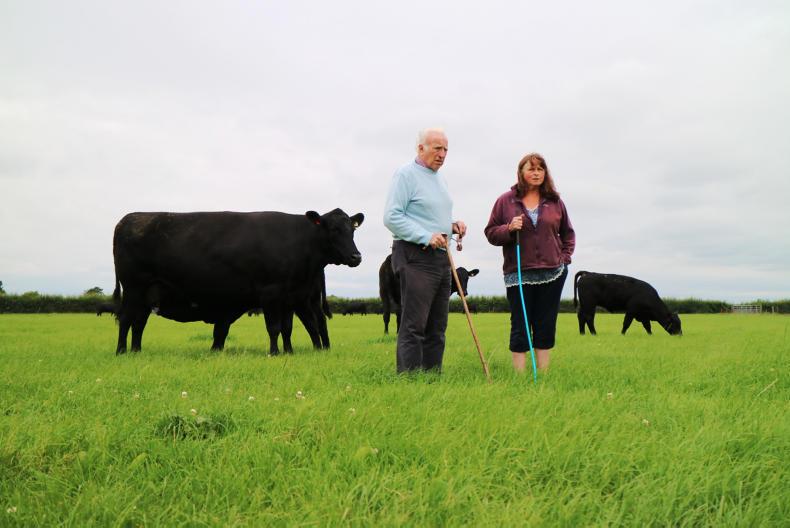
Willie and Angelia Robertson walking their Nightingale herd.The cattle need to develop naturally and the belief is that cattle must be good and good cattle must be functional
Having originally come from the home of the Aberdeen Angus in Scotland, the Nightingale herd moved down to Worcestershire countryside in England over 45 years ago, in 1971. The farm, run by Willie Robertson and his family, is located in the Vale of Evesham region, which is known for its famous fruit and vegetables. This, along with being so close to the Malvern hills, means the farm suffers from drought at peak times of heat. The current herd consists of 70 cows. The majority of animals are bred naturally, with the exception of select females used for flushing – the family sells these for added income as well as breeding further descendants into the herd.
In 1974, Willie visited Canada and decided what direction he wanted to go with the breed. At the time the Angus breed was in decline, but Willie came back convinced that the large-framed cattle across the water were the type required. This led the herd to importing the best females available with emphasis on length and height, paying no heed to the criticism that the breed would lose its traditional qualities.
Canadian imports
“It is over 40 years since we imported the first females from Canada with the foresight that to survive in the business as cattle breeders, we would have to breed a type of animal that would come within striking distance of the continental-type cattle,” explains Willie.
They continue this breeding strategy up to this day, with an increased focus on improving feed efficiency and lowering maintenance of these bigger cattle.
“The use of an outcross animal and utilisation of hybrid vigour makes for an outstanding animal in the present time, but makes little contribution after the second generation. Our main aim and direction is to line-breed, to produce a pure animal that is dependable and predictable, which will be easier to merchandise with evaluated facts and not anticipation,” says Willie.
This form has seen the herd bred from 23 different female lines, standing as a relatively closed herd – with the exception of a bull or heifer to prevent inbreeding.
But for an animal to enter the Nightingale herd, an extensive background check is carried out.
The Robertson’s farm, now run by Willie, his daughter Angela and grandson Piers, follows a non-labour-intensive and simplistic system, to allow the cattle develop naturally. This system carries through for both males and females, with all Nightingale females for the last 40 years calving down at two years old on grass and grass silage only.
“The cattle need to develop naturally and the belief is that cattle must be good and good cattle must be functional. All our efforts are directed at breeding an efficient and profitable animal for the farmer, and to develop a carcase that will produce the finest quality eating meat for the consumer.”
However, this system has not only worked for the Robertsons – their prefix has been carried into the world, producing top show cattle for some of the best-known herds.
Each year at Stirling, the Nightingale herd name continues to be as prominent as ever in many of the championship winners and show toppers. This year’s October sale has seen the overall champion sired by AI Nightingale Proud Jake G405, while in February five of the six champion sashes were awarded to stock with Nightingale breeding.

Nightingale Poundman, former stock bull for the herd and full brother to AI bull Netherallan Peter Pershore.Irish connection
While Irish-bred stock tend not to bring the extremities in size seen across the water, the Nightingale influence can still be seen. A number of the herd’s best bulls have made it in Ireland through the use of AI. Nightingale Proud Jake bred the overall All-Ireland champion in 2014 and the senior and reserve Aldi All-Ireland champion 2013, while Nightingale El Paso bred the senior Aldi champion in 2014. Another bull called Netherallen Peter Pershore, although not carrying the Nightingale prefix, was an embryo bought from the Robertson’s. He sees two bulls standing in AI, Friarstown Ideal Pete and Thrunton Rocket; and also bred the top-priced heifer at the inaugural Aberdeen Angus sale last year in Carrick. Finally, Nightingale Dunbar just last December bred Elite sale topper Carrigroe Mrs Dunbar, who sold for €8,300.
Whether a fan or not of the Nightingale herd type of cattle, one thing is for sure – their genetics have played a huge role in the breed’s development over the last 45 years.
This article first appeared in the Irish Farmers Journal Pedigree magazine.
It was love at first sight – when I saw her I just knew I had to have her
Located outside Shropshire in west England, the Wilodge prefix first came into play back in 1989 when Don Williams and daughter Christine made the decision to start a pedigree Limousin herd having had previous experience with the breed in the commercial ring. Since then the herd has expanded to 50 breeding females and has had a massively influential effect on the Limousin breed as a whole.
The first major purchases by the father and daughter was that of four cows from the Boswells dispersal in 1992. These bred well, with some of Borewell Danette’s descendants still in the herd. Other purchases followed from Peasley, Lodge, Crowhead and Newsham, Paddock and Hengrave and in the early 1990s the decision was made to sell the Blondes, Charolais and Simmentals that had joined the farm to concentrate solely on Limousin and British Blue cattle.
Some standout female purchases early on in the Wilodge herd’s life included Balavil Dolly and Midtown Gem.
“Dolly was bought as a maiden heifer from Perth and has produced well for the herd, breeding Wilodge Dolly, who then bred to Manoir produced Wilodge Ritzy, who sold for 20,000gns as a foundation female for Harry Emslie and Lynwen Evan,” said Christine.
“Midtown Gem was bought in September 1992 for 1,350gns which bred us Wilodge Little Gem, who then produced Wilodge Priceless, who is the mother of Wilodge Cerberus, who sold for 50,000gns to Whinfell Park in 2008.”
Best cow
Christine went on to take over the business in 1997, and in 2001 the history books began to be written. This was the year Christine set eyes on the 10-month-old French heifer Ravenelle who was purchased at the KBS sale for £5,000.
“It was love at first sight – when I saw her I just knew I had to have her,” said Christine.
While this stylish female is well admired at the Wilodge farm, it’s in her production that she excels, breeding the 42,000gns Wilodge Vantastic. This name has being more prominent than any other in the Limousin world over the past decade, with progeny topping sales and leading classes throughout the UK. This line’s breeding dominates the herd make-up, with a number of the best cattle in the herd descending from her, including Wilodge Vananelle, Vantastic’s full sister, which has being producing for more than a decade herself. Ravenelle continues to breed in the Wilodge herd to this day, even at the ripe age of 16.

Ravenelle at 16 years old, dam of renowned AI bull Wilodge Vantastic.While Vantastic may have being the bull to kick-start the herd’s progress, a lot more were to follow, such as Wilodge Cerberus, who went on to sell for the herd’s record price of 50,000gns two years after Vantastic and even to this day is one of the most recognised names in Irish and UK Limousin sales catalogues.
Irish influence
The herd, now run by Christine and her partner Paul Tippet, continues to breed some of the best bulls available in the world, with the likes of Wilodge Fastrac and Wilodge Joskins, two Vantastic sons, available through Irish AI companies Eurogene and Dovea. Most of these bulls are got through a rigorous Embryo transfer programme in the herd using the best AI and stock bulls available. Some current AI bulls the herd is using with calves on the ground are Brutus Hashtag, Lowerffrydd Empire and Plumtree Deus
Even more notable is the herd’s use of Irish genetics through the years, using the likes of Millbrook Tanko, Powerful Irish as well as their most recent stock bull purchase Gerrygullinane Glen. Bred by the Walsh family in Co Mayo, Glen was purchased privately by Christine after she made him champion at Bonniconlon show back in 2012 when he was just eight months old. Since then Glen was collected by Cogent AI and bred numerous champions including Derrygullinane Kingbull the senior champion at Roscrea last October before selling for the top price of €11,300.

Raymond Irvine with the Inverlochy herd’s stock bull.I think it’s important that we maintain what’s good about the breed and has made us stand out from others
Raymond Irvine together with his parents John and Liz run Inverlochy herd near Tomintoul, Ballindalloch, in the Scottish highlands. The herd consists of 45 pedigree Charolais cattle, which is run alongside a commercial herd of 50 Simmental and Saler cross cows mated to Charolais sires, and a flock of 700 blackface ewes. The farm extends to about 4,000 acres in the Cairngorms national park. Farming at an altitude of around 2,200ft, you might not expect to see a herd of pedigree Charolais cattle roaming the fields. However, despite the harsh climate and rough terrain, it hasn’t stopped the Inverlochy herd from becoming one of the most successful Charolais herds in the UK.
It was John who first introduced the breed to the farm back in 1971. Having previously spent some time working on Abbey farm in Warwickshire, where he calved down the first Charolais bull calf born in the UK, later returned to purchase that same animal, the then five-year-old Crosslands Crusader. The bull was run commercially for the first number of years and caused a great stir locally when the first Charolais cross calves came up for sale. They were very different to the then commonplace Angus and Hereford-type cattle.
“When I saw my calves fetching £40 to £50 more, when £50 was a lot of money, than the traditional-bred cattle, I knew Charolais was the breed of the future,” said John.
It wasn’t until 1978 that the Irvines purchased their first pedigree Charolais cow and started the Inverlochy herd. The herd was built up over the coming years with a preference for buying in-calf cows with good bloodlines behind them. Two of the most notable acquisitions were Nettlemoor Cleo and her daughter Nettlemoor Felicity who were purchased at the dispersal sale of the Nettlemoor herd. Felicity was the dam of one of their most successful stock bulls, Inverlochy Resolve. Sired by another homebred bull Oh-Boy, Resolve’s successes include a male championship at the Highland Show, as well as breed and inter-breed titles at both the Black Isle and Perth shows.
Raymond recalls: “One of our best days out was in 2004 at Perth when we sold the first of Resolve’s offspring. We managed a record-breaking average price of 12,000gns for eight bulls on the one day.”
That year stood as a bumper year for the family, winning Charolais herd of the year as well as Raymond receiving the Charolais stockman of the year award.

Inverlochy’s Irish-bred stock bull Kilbline Instigator at last year’s Highland show, where he was awarded overall male champion. Irish connection
Another bull that has bred exceptionally well for the Irvines is Balmyle Bollinger, a 31,000gns bull purchased by a consortium of four breeders. He sired Inverlochy Fencer who was Junior and overall supreme champion and Inverlochy Ferdie, who was intermediate and overall reserve champion at the Perth sales in February 2012. Fencer sold for 20,000gns while Ferdie, whose dam was again by Inverlochy Resolve, was purchased by Dovea Genetics for 25,000gns.
The following year another bull was destined for Irish shores when a full brother of Fencer, Inverlochy Gurka, was purchased by the national cattle breeding centre (NCBC) for 11,000gns.
But it hasn’t been all one-way traffic. Raymond purchased Kilbline Instigator from Noel and Kate Sugrue, Bennettesbridge, Kilkenny in 2015, having previously given the bull male champion and overall reserve when he judged Tullamore show in 2014. Sired by Oscar and out of a Doonally new dam, Instigator was purchased for €7,200 and has had a successful year, claiming the male overall championship at this year’s Highland show.
Bull sales
The aim is to produce 14 to 15 bulls for sales each year; while any heifers suitable for breeding are retained. The majority of pedigree bulls are sold through Perth and Sterling sales with anything else that doesn’t meet the strict criteria of Raymond and John sold as stores with the rest of the commercial cattle.
Breeding stock
Traditionally breeding stock were selected for size, length and backend, as well as being correct on their feet to carry the extra weight. While there has been some changes made to the breeding policy in recent years to try to keep calving ease figures in check, Raymond is determined to maintain the characteristics, such as growth and conformation, that have served them well in the past. He feels sensible use of Charolais bulls on mature cows can alleviate the majority of problems with calving difficulty. Body condition score must be correct at calving. Winter diets for cows consists of silage and draff, a by-product of the nearby distillery.
Raymond says: “Keeping cow’s lean coming up to calving plays a much greater role in calving ease than any bulls figures ever will.”
Raymond has trained in the use of AI in the last couple of years and now all heifers are mated to bulls selected on calving ease.
“I think it’s important as Charolais breeders that we maintain what’s good about the breed and has made us stand out from others. Chasing figures could lead us down a road we don’t want to go down in the long run.”
“Charolais is still the number one breed when you go to the commercial ringside. Farmers consistently receive higher prices for Charolais cattle as well as having greater sale weights due to high daily liveweight gains achieved by the breed.”

Willie and Angelia Robertson walking their Nightingale herd.The cattle need to develop naturally and the belief is that cattle must be good and good cattle must be functional
Having originally come from the home of the Aberdeen Angus in Scotland, the Nightingale herd moved down to Worcestershire countryside in England over 45 years ago, in 1971. The farm, run by Willie Robertson and his family, is located in the Vale of Evesham region, which is known for its famous fruit and vegetables. This, along with being so close to the Malvern hills, means the farm suffers from drought at peak times of heat. The current herd consists of 70 cows. The majority of animals are bred naturally, with the exception of select females used for flushing – the family sells these for added income as well as breeding further descendants into the herd.
In 1974, Willie visited Canada and decided what direction he wanted to go with the breed. At the time the Angus breed was in decline, but Willie came back convinced that the large-framed cattle across the water were the type required. This led the herd to importing the best females available with emphasis on length and height, paying no heed to the criticism that the breed would lose its traditional qualities.
Canadian imports
“It is over 40 years since we imported the first females from Canada with the foresight that to survive in the business as cattle breeders, we would have to breed a type of animal that would come within striking distance of the continental-type cattle,” explains Willie.
They continue this breeding strategy up to this day, with an increased focus on improving feed efficiency and lowering maintenance of these bigger cattle.
“The use of an outcross animal and utilisation of hybrid vigour makes for an outstanding animal in the present time, but makes little contribution after the second generation. Our main aim and direction is to line-breed, to produce a pure animal that is dependable and predictable, which will be easier to merchandise with evaluated facts and not anticipation,” says Willie.
This form has seen the herd bred from 23 different female lines, standing as a relatively closed herd – with the exception of a bull or heifer to prevent inbreeding.
But for an animal to enter the Nightingale herd, an extensive background check is carried out.
The Robertson’s farm, now run by Willie, his daughter Angela and grandson Piers, follows a non-labour-intensive and simplistic system, to allow the cattle develop naturally. This system carries through for both males and females, with all Nightingale females for the last 40 years calving down at two years old on grass and grass silage only.
“The cattle need to develop naturally and the belief is that cattle must be good and good cattle must be functional. All our efforts are directed at breeding an efficient and profitable animal for the farmer, and to develop a carcase that will produce the finest quality eating meat for the consumer.”
However, this system has not only worked for the Robertsons – their prefix has been carried into the world, producing top show cattle for some of the best-known herds.
Each year at Stirling, the Nightingale herd name continues to be as prominent as ever in many of the championship winners and show toppers. This year’s October sale has seen the overall champion sired by AI Nightingale Proud Jake G405, while in February five of the six champion sashes were awarded to stock with Nightingale breeding.

Nightingale Poundman, former stock bull for the herd and full brother to AI bull Netherallan Peter Pershore.Irish connection
While Irish-bred stock tend not to bring the extremities in size seen across the water, the Nightingale influence can still be seen. A number of the herd’s best bulls have made it in Ireland through the use of AI. Nightingale Proud Jake bred the overall All-Ireland champion in 2014 and the senior and reserve Aldi All-Ireland champion 2013, while Nightingale El Paso bred the senior Aldi champion in 2014. Another bull called Netherallen Peter Pershore, although not carrying the Nightingale prefix, was an embryo bought from the Robertson’s. He sees two bulls standing in AI, Friarstown Ideal Pete and Thrunton Rocket; and also bred the top-priced heifer at the inaugural Aberdeen Angus sale last year in Carrick. Finally, Nightingale Dunbar just last December bred Elite sale topper Carrigroe Mrs Dunbar, who sold for €8,300.
Whether a fan or not of the Nightingale herd type of cattle, one thing is for sure – their genetics have played a huge role in the breed’s development over the last 45 years.
This article first appeared in the Irish Farmers Journal Pedigree magazine. 








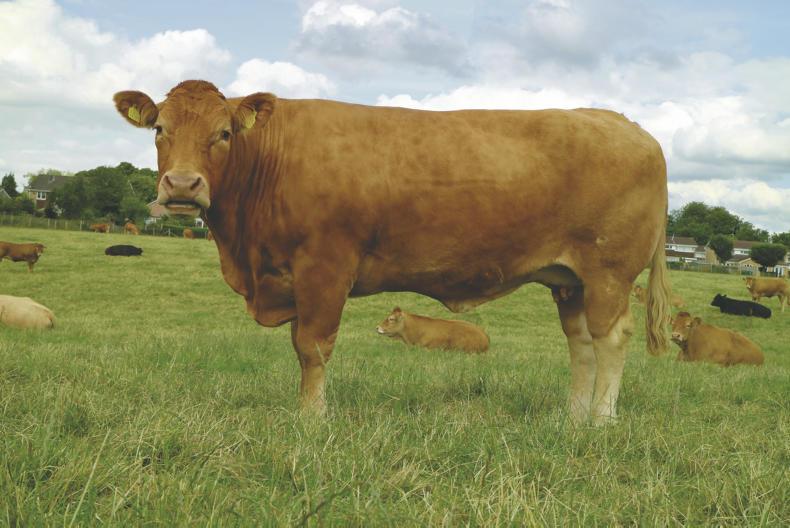
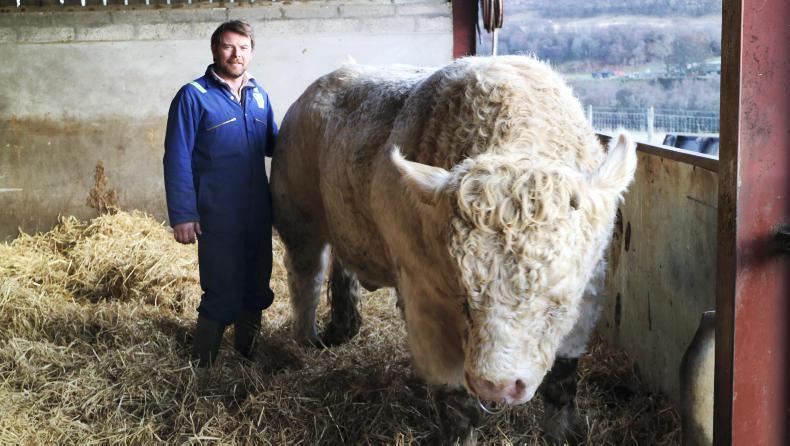


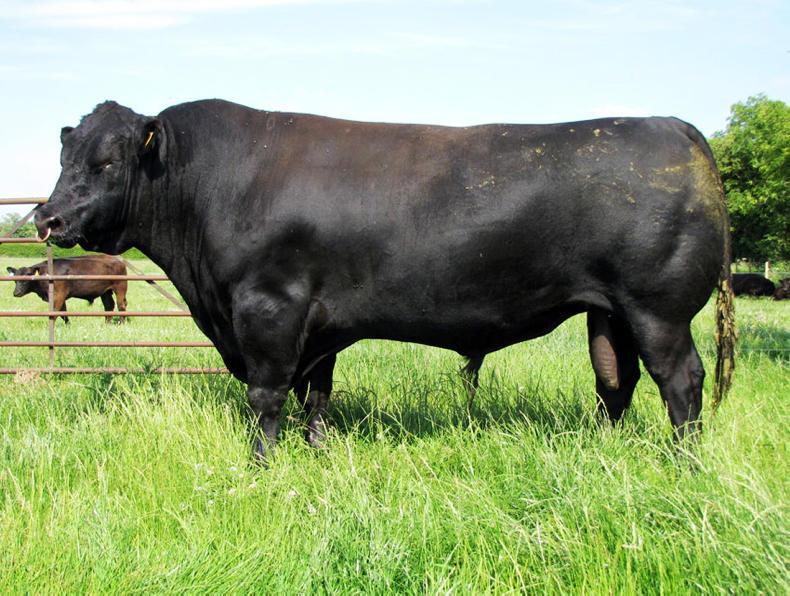
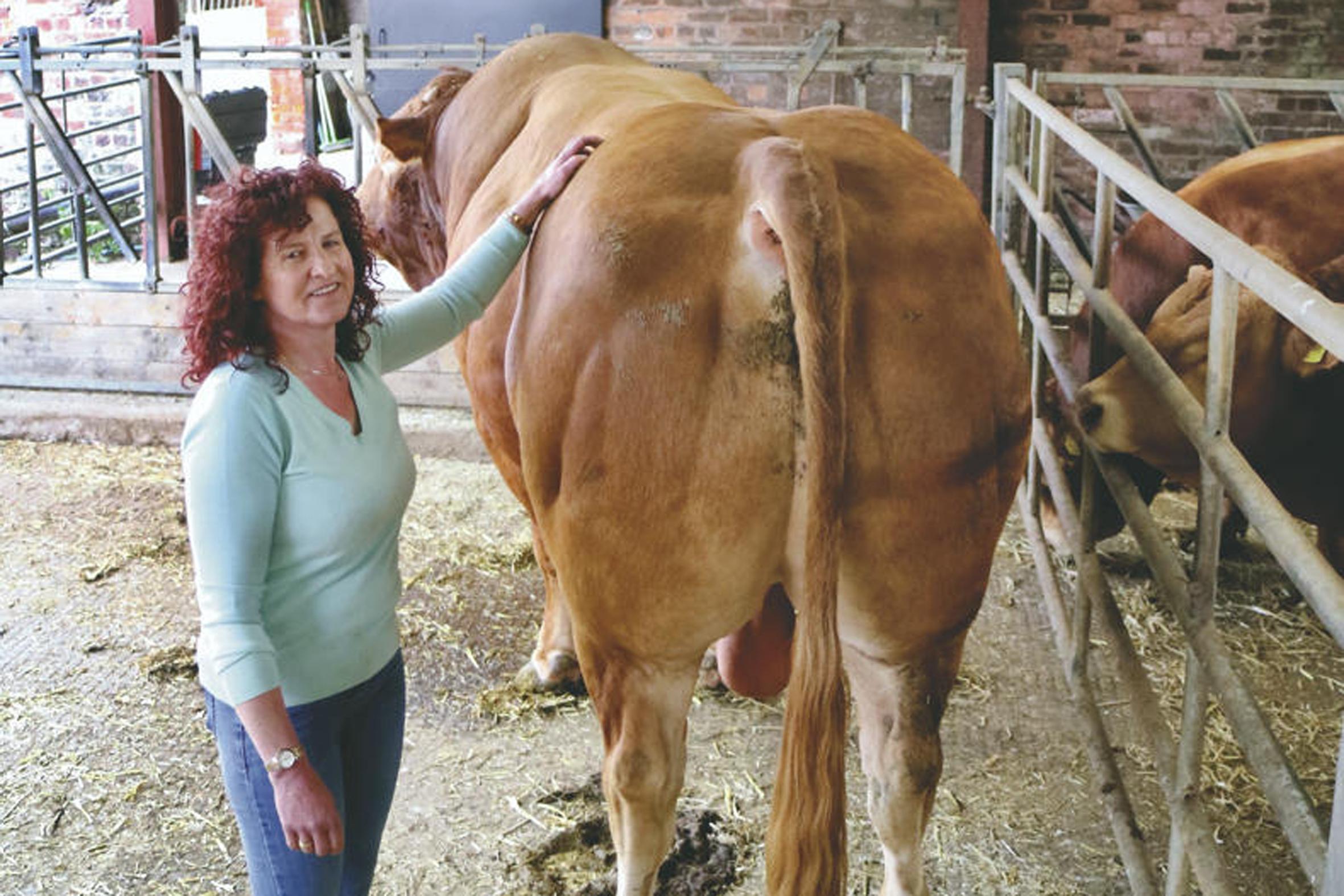
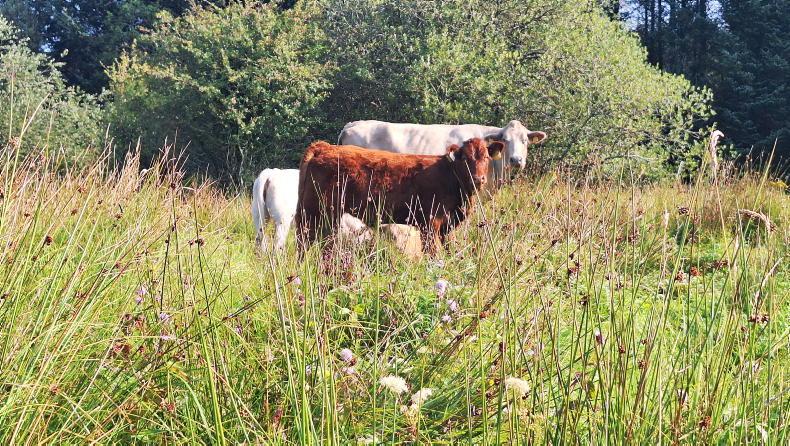

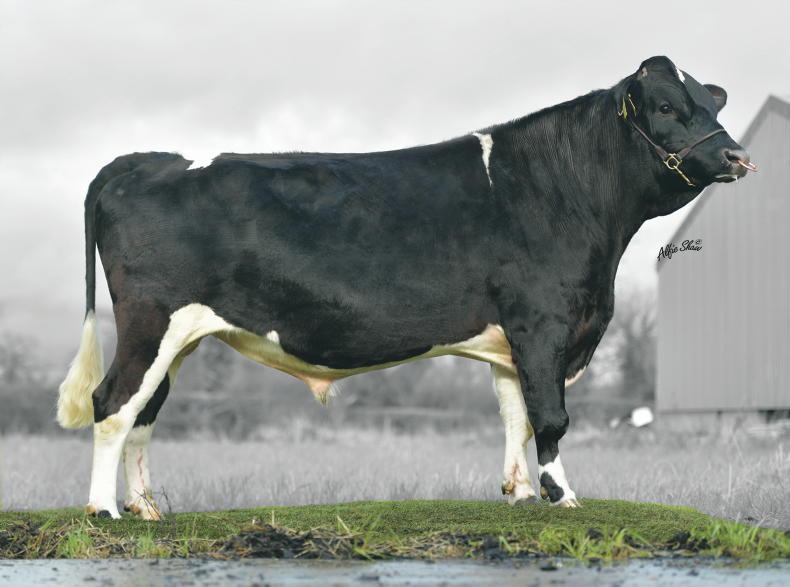
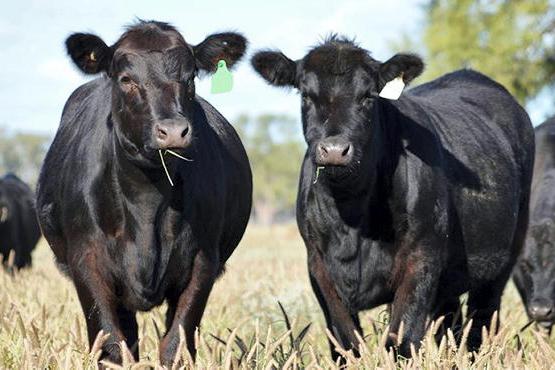
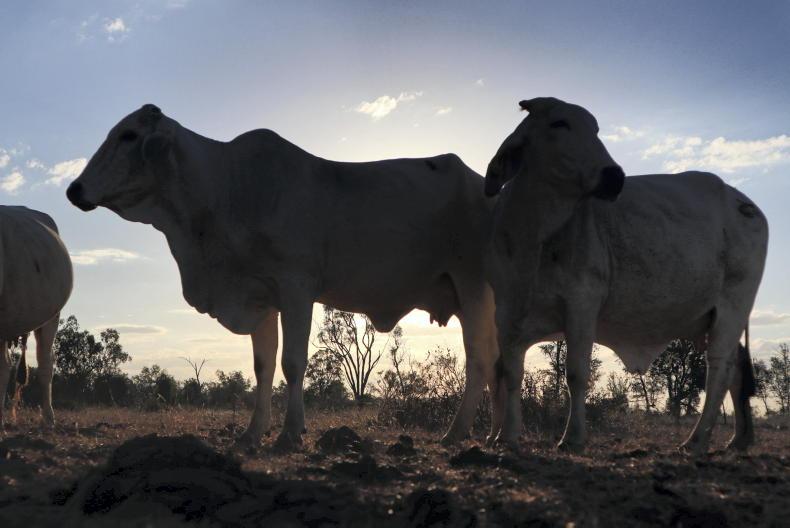
SHARING OPTIONS